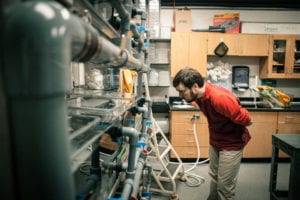
Ira Pastor, ideaXme life sciences ambassador and founder of Bioquark, interviews Dr. Michael Levin, Tufts University Professor who holds the Vannevar Bush endowed Chair in the Biology Department, and who serves as both the Director of the Tufts Center for Regenerative and Developmental Biology and Director of the Allen Discovery Center at Tufts.
Ira Pastor comments:
Form is generally defined as the shape and structure of something as distinguished from the materials that it’s constructed from, and the branch of biology that deals with the form of living organisms, and with the relationships between their structures, is known as morphology.
Every level of the human body requires complex form control mechanisms to be functional throughout a lifetime, across the body’s many hierarchies (at the levels of DNA, cells, tissues, organs, limbs, and body segments), in order to accomplish a range of biologic outputs from embryogenesis, to growth, repair and regeneration, to preventing everything from tumor formation to transitions into a range of degenerative disease, to even neuro-plasticity in the human brain.
Yet, when it comes to topics like shape, size, polarity, position, where the properties and characteristics of the component parts of a system and the reciprocal interplay of all the components on each across these hierarchies are required, researchers need to go well beyond studying an individual gene or protein or stem cell, to a range of fascinating top-down control processes which control complex biological morphology.
Today, we have the honor of being joined by a true thought leader of this space, Dr. Michael Levin, Tufts University Professor who holds the Vannevar Bush endowed Chair in the Biology Department, and who serves as both the Director of the Tufts Center for Regenerative and Developmental Biology and Director of the Allen Discovery Center at Tufts.

Dr. Levin Researchers the Utilization of Bioelectricity for Regeneration
Dr. Levin’s group’s focus is on understanding the biophysical mechanisms that implement decision-making during complex pattern regulation and harnessing endogenous bioelectric dynamics toward rational control of growth and form.
Dr. Levin’s lab current main directions are:
- Understanding how somatic cells form bioelectrical networks for storing and recalling pattern memories that guide morphogenesis.
- Creating next-generation AI tools for helping scientists understand top-down control of pattern regulation (a new bioinformatics of shape).
- Using these insights to enable new capabilities in regenerative medicine and engineering.
Dr. Levin has dual B.S. degrees, in Computer Science and in Biology, and then received a PhD from Harvard University. He did post-doctoral training at Harvard Medical School, where he began to uncover a new bioelectric language by which cells coordinate their activity during embryogenesis. His independent laboratory (2000-2007 at Forsyth Institute, Harvard; 2008-present at Tufts University) develops new molecular-genetic and conceptual tools to probe large-scale information processing in regeneration, embryogenesis, and cancer suppression.
Dr. Levin’s recent honors include the Scientist of Vision award and the Distinguished Scholar Award.
On this episode we will hear from Dr. Levin about:
His background and how he became interested in computer science, biology, and the extremely frontier science space of biological morphology control. The introductory concept of a “Morphogenetic Field.” An introduction to the theme of “Developmental Bioelectricity” which refers to the regulation of cell, tissue, and organ-level patterning and behavior as the result of endogenous electrically-mediated signaling.
A general theme of the ability of morphogenetic fields and developmental bioelectricity to organize in/out required cells, as well as modify the diseased phenotype, as seen in his experiments in “normalizing” cancer. A general theme of the ability of morphogenetic fields and developmental bioelectricity to accomplish complex regeneration. His views on developmental bioelectricity modulating drugs versus using electroceuticals. His model of “Variational Free-Energy Minimization” as a way for human bodies to store complex pattern information.
His work in “non-CNS” information processing, storage, and cognition – such as in aneural organisms which do not possess brains, in non-neural human tissues, and in single cell organisms that agglomerate to form multi-cellular structures, like slime moulds. His experiences in fundraising for frontier sciences, such as with The Paul G. Allen Frontiers Group (the late Microsoft co-founder) whose mission is to “uncover and make visible the emerging frontiers of science, identifying pioneering explorers to create new knowledge, and produce important solutions that make the world better.”
This interview is in American English

Credits: Ira Pastor interview video, text, and audio.
Follow Ira Pastor on Twitter: @IraSamuelPastor
If you liked this interview, be sure to check out our interview with David Mittelstein
on Killing Cancer With Ultrasound!
Follow ideaXme on Twitter: @ideaxm
On Instagram: @ideaxme
On YouTube: ideaxme
Find ideaXme across the internet including on iTunes, SoundCloud, Radio Public, TuneIn Radio, I Heart Radio, Google Podcasts, Spotify and more.
ideaXme is a global podcast, creator series and mentor programme. Our mission: Move the human story forward!™ ideaXme Ltd.
